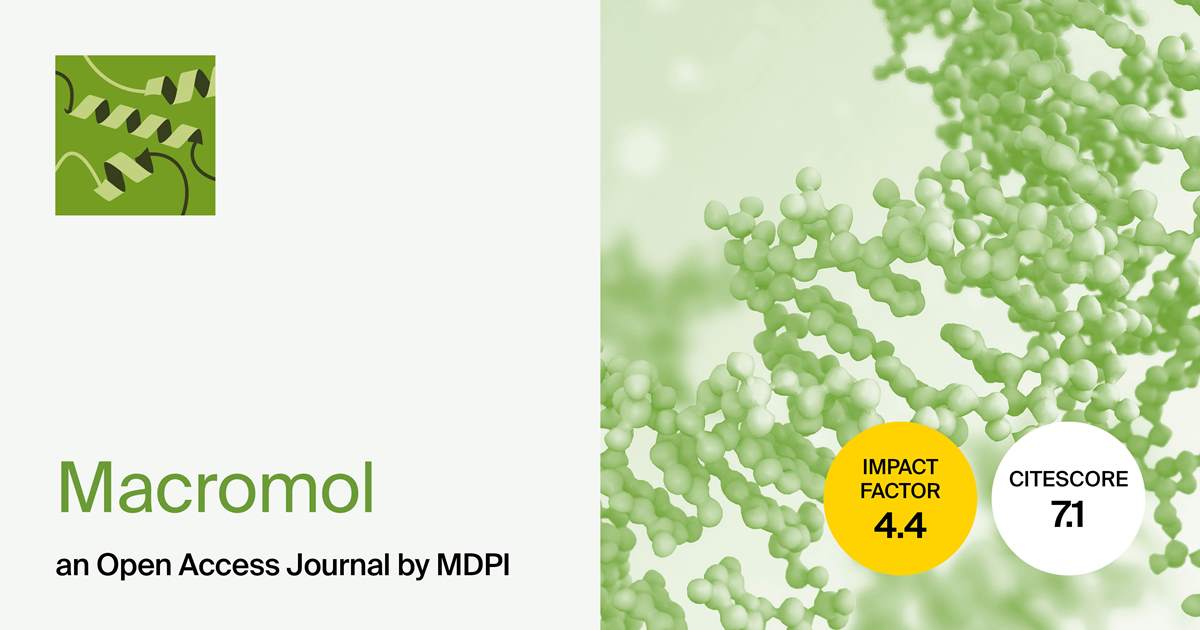
Macromol | Aims and Scope Update
To further enhance the quality of Macromol and the papers published in it, under the guidance of our Editor-in-Chief, Prof. Dr. Maria Cristina Bonferoni, the journal has updated and revised its aims and scope.
The original scope and the updated version are listed below:
| Aims (new version): | Aims (old version): |
|
Macromol (ISSN: 2673-6209) is an international, peer-reviewed, open access journal providing an advanced forum for theoretical and experimental research on the topic of macromolecules. Novel reviews, regular research papers, short communications, and Special Issues on subjects related to the design, synthesis, characterization, and application of macromolecules are published in Macromol. The journal is especially focused on macromolecules of natural origins and their biological applications, featuring studies in biochemistry, molecular biology, medicine, food, and pharmaceutics. The main aim of Macromol is to provide a leading forum for the rapid and world-wide dissemination of cutting-edge research in the field of macromolecule science. Scientists are encouraged to publish their results in as much detail as possible; therefore, the journal has no restrictions regarding the maximum length of papers, only that full experimental details should be provided so that the results can be reproduced. |
Macromol (ISSN 2673-6209) is an international, peer-reviewed, open access journal providing an advanced forum for studies on all aspects of macromolecular research, both theoretical and experimental. It publishes novel reviews, regular research papers, and short communications as well as Special Issues on particular subjects related to macromolecular design, synthesis, characterization, and application. The main aim of Macromol is to provide a leading forum for the fast and world-wide dissemination of cutting-edge research on the field of macromolecular science. Scientists are encouraged to publish their results with as much detail as possible. Therefore, the journal has no restrictions regarding the maximum length of papers. Full experimental details should be provided so that the results can be reproduced. |
| Scope (new version): | Scope (old version): |
|
Topics covered by Macromol include, but are not exclusively limited to, the following:
|
Topics covered by Macromol include but are not exclusively limited to the following:
|
For more detailed information, please visit the following link: https://www.mdpi.com/journal/macromol/about.
Macromol Editorial Office